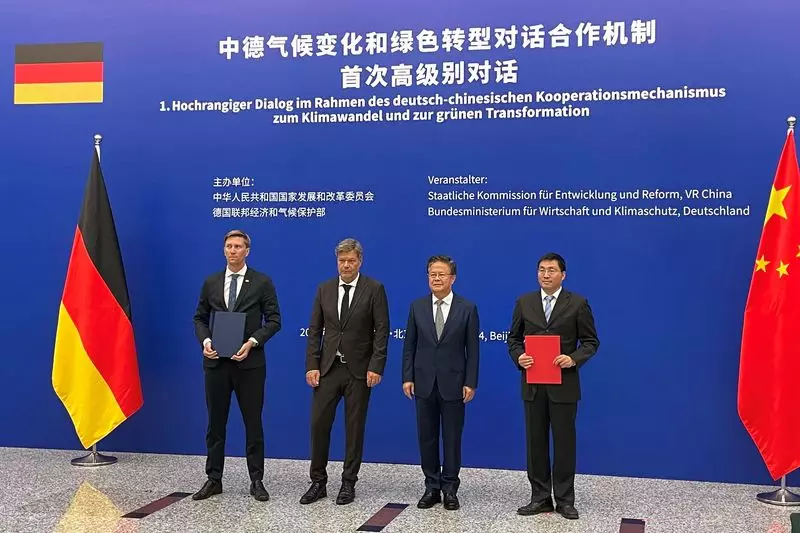Germany’s Economy Minister Robert Habeck recently visited China and made a statement regarding the European Union’s willingness to engage in discussions about tariffs on Chinese exports. This statement comes at a crucial time as the EU proposed hefty duties on Chinese-made electric vehicles (EVs) in response to what it perceives as excessive subsidies. Habeck emphasized the importance of open markets but also stressed the need for a level playing field. The dialogue between the EU and China on tariff issues is essential before the duties come into full effect in November.
One of the key points of tension between Beijing and Berlin is China’s support for Russia in its conflict with Ukraine. Habeck highlighted the significant increase in Chinese trade with Russia, expressing concerns about the impact on the economic relationship between China and Germany. He emphasized that circumventing sanctions imposed on Russia is unacceptable, especially if European goods end up on the battlefield through other countries. These tensions underscore the complexities of international trade relations and the need for diplomatic negotiations.
A Time for Negotiations
The EU’s provisional duties on imported Chinese EVs are set to take effect by July 4, with a continuation of the investigation until November. This window provides an opportunity for negotiations, discussions, and dialogue between the EU and China. Habeck clarified that the proposed EU tariffs are not intended as punishment but rather as a means to address unfair advantages gained through subsidies. This distinction is crucial in understanding the EU’s approach to trade disputes and its commitment to fair competition.
European Perspective on Tariffs
Habeck emphasized that the European Commission conducted a thorough examination of alleged subsidies benefiting Chinese companies. Any countervailing duty measures that may result from this review are not punitive but rather aim to level the playing field for all market participants. While Chinese officials reaffirmed their commitment to protecting domestic companies, they also emphasized the importance of fair competition and technological advancement. The debate over subsidies versus competition highlights differing views on the drivers of industry growth and innovation.
Despite the disagreements and challenges in the ongoing tariff negotiations, there is still room for maneuver and discussion between the EU and China. Habeck expressed hope for a constructive dialogue that could lead to a mutually beneficial agreement. In response to the threat of tariffs, Chinese carmaker SAIC Group showcased a range of creative products designed to offset potential losses. This innovative approach demonstrates the adaptability and resilience of industries in the face of trade tensions and uncertainties.
Overall, the discussions between the EU and China regarding tariffs on Chinese exports reflect the complexities of international trade relations and the challenges of balancing economic interests with fair competition. As negotiations continue, both parties will need to navigate competing priorities and seek common ground to ensure a stable and mutually beneficial trade environment. The outcomes of these discussions will not only impact the economies of the EU and China but also set a precedent for future trade relations and diplomatic engagements on a global scale.


Leave a Reply